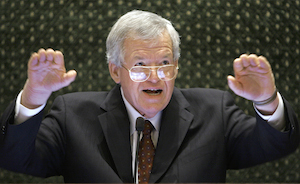PDF: Ochs Center State of the Region Report: Education
A study highlighting the chasm between the performance of Hamilton County's best and worst schools put school leaders' feet to the fire over allowing such inequality to persist and shoved the issue of the system's achievement gap into the spotlight.
But one thing the report didn't touch on: The inequality stands to get worse.
An Ochs Center for Metropolitan Studies report, "State of the Region Report: Education," reaffirmed that the system's poor, majority-black schools just don't do as well as schools in more prosperous -- usually whiter -- neighborhoods.
School leaders don't dispute the findings, but they say it will take more money, more people and more programs if the county ever hopes to sever the link between poverty and low school performance.
Right now, though, funding for poor schools is trending in the other direction. Programs are going away. Dollars earmarked for poorer schools are dwindling. And school officials already think the 42,000-student district is underfunded.
"We, in fact, have gone backwards," said Superintendent Rick Smith.
If schools are going to bridge the gap, or at least make a dent in it, Smith said they'll need more -- more guidance counselors, more interventionists, more teachers of English as a second language and even more time, Smith said.
But the study's findings, the conversation, shouldn't be defined by money alone, said Ken Chilton, the Ochs Center president and CEO who wrote the report.
Chilton, whose last day at the center was Friday, conceded there's no single proven remedy that closes achievement gaps on a large scale. But he said smaller-scale success has been seen in some places.
"Are we looking at what's working or potentially working in other communities and trying to create it here?" he asked. "At face value, it doesn't seem to be working when you take all low-income kids and throw them in the same schools and teach them the same way you're teaching everybody else."
Decades of the larger community sweeping problems caused by poverty under the rug have instilled a sense of hopelessness among poor, black parents and students, said Eddie Holmes, a former NAACP president.
"The commitment has to be more than words," Holmes said. "They abandon these kids to the community. Abandon them."
Holmes, who in 2002 filed a complaint against Hamilton County Schools for the dilapidated condition of the Howard School, said he's not convinced that money is the single answer to low performance, although he notes that it's going to take more funding to see some change.
"To improve something you've got to invest in it," he said. "It's not going to improve on its own."
Funding falling behind
But the Ochs report makes the case that Hamilton County is losing ground in a state already "notorious for its meager investment in education."
Tennessee finishes 49th of the 50 states and the District of Columbia in per-pupil education spending, according to the U.S. Census Bureau. Tennessee spends an average of $8,242 per pupil, compared to states like Louisiana, Delaware and New Jersey, which spend more than $10,000, $12,000 and $15,000, respectively, for each public school student.
But the report finds that Hamilton County spending fell between 2007 and 2012, even compared to the state as a whole. Adjusted for inflation, the report states, the county spent about $321 less per pupil in 2012 than in 2007.
In the past five years, the Hamilton County Board of Education has cut about $44 million to balance budgets in the face of rising costs in health care, utilities and salaries.
And more losses are coming.
Officials said the current federal sequestration will mean an estimated cut of $700,000 to $800,000 in federal Title I funds, supplemental money that goes to high-poverty schools. Programs such as Head Start are being cut back. Locally, at least one Head Start location will close.
"When you look at the federal dollars, the situation is quite uncomfortable," the school superintendent said. "And as a community we've got to recognize that, without these programs, this situation will never be reversed."
Smith said the school system -- and the community -- need to focus attention on early childhood and elementary education because some kids are coming to kindergarten and preschool already behind. If teachers can reverse those trends early on, the task for middle and high schools won't seem so monumental.
"We've got to talk differently about feeder pattern development and not just focus on the end results -- the Howards, the Brainerds," Smith said.
Local investments in both poor and wealthy schools have proven fruitful here in the past, said Christa Payne, spokeswoman for the Public Education Foundation.
The Benwood Initiative sought to reform performance at low-achieving elementary schools. Over about a decade, it invested some $8 million and worked on teacher and leadership development. Test scores improved at those schools.
Now a PEF program funded by a private grant is providing instructional coaches to all Hamilton County middle schools, and it's showing results in all schools, regardless of demographics, Payne said.
"You can see the math scores increasing," she said.
But PEF has ended some programs, too.
Benwood went away last school year because of lost funding. PEF recently discontinued its Teacher Induction Program, which worked with first-year teachers to improve retention rates and performance. Payne said the organization is seeking funding to continue the effort.
While some programs that target impoverished schools are disappearing, Chattanooga Mayor Andy Berke may be poised to fill in some of the void.
Berke made education and youth development a key part of his campaign rhetoric, and that tune has continued in the early months of his administration.
"As a city and as a community, improving youth development is the most important investment we can make in our future," Berke said in a written statement Friday. "Our Youth and Family Development department will ensure that city government works together with parents, churches, non-profits and educators so that every child has the opportunity to grow and achieve."
But county commissioners, who fund the school system, are frequent critics of the system's budget. And they don't seem to have an appetite for giving schools anything more than the guaranteed increases that come from student growth and growth in the county's property tax base.
"Schools always want more money," said Commissioner Fred Skillern. "I don't think you could give them so much they wouldn't want more."
Contact staff writer Kevin Hardy at khardy@timesfreepress.com or 423-757-6249.


